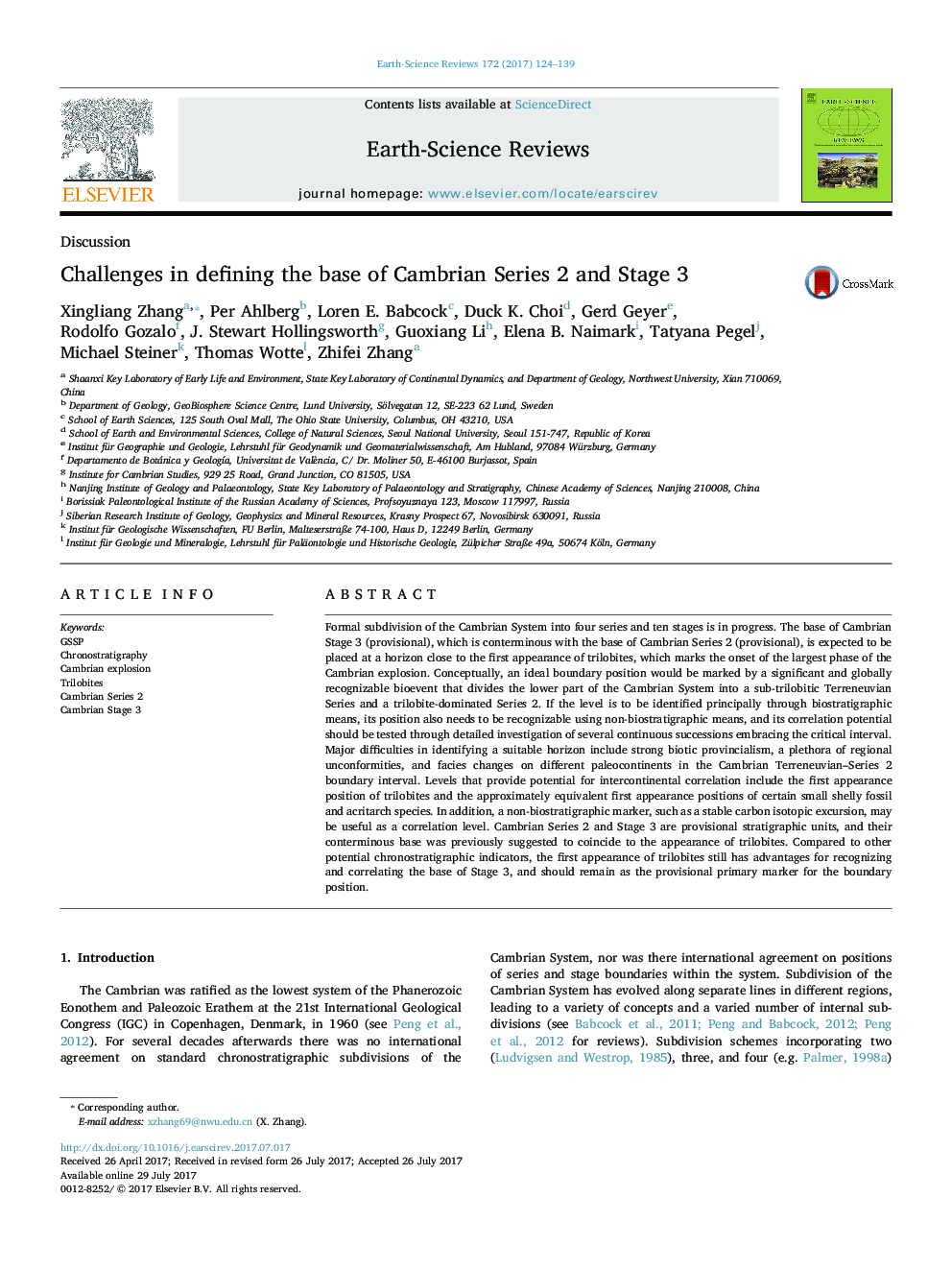| Article ID | Journal | Published Year | Pages | File Type |
|---|---|---|---|---|
| 5785031 | Earth-Science Reviews | 2017 | 16 Pages |
Formal subdivision of the Cambrian System into four series and ten stages is in progress. The base of Cambrian Stage 3 (provisional), which is conterminous with the base of Cambrian Series 2 (provisional), is expected to be placed at a horizon close to the first appearance of trilobites, which marks the onset of the largest phase of the Cambrian explosion. Conceptually, an ideal boundary position would be marked by a significant and globally recognizable bioevent that divides the lower part of the Cambrian System into a sub-trilobitic Terreneuvian Series and a trilobite-dominated Series 2. If the level is to be identified principally through biostratigraphic means, its position also needs to be recognizable using non-biostratigraphic means, and its correlation potential should be tested through detailed investigation of several continuous successions embracing the critical interval. Major difficulties in identifying a suitable horizon include strong biotic provincialism, a plethora of regional unconformities, and facies changes on different paleocontinents in the Cambrian Terreneuvian-Series 2 boundary interval. Levels that provide potential for intercontinental correlation include the first appearance position of trilobites and the approximately equivalent first appearance positions of certain small shelly fossil and acritarch species. In addition, a non-biostratigraphic marker, such as a stable carbon isotopic excursion, may be useful as a correlation level. Cambrian Series 2 and Stage 3 are provisional stratigraphic units, and their conterminous base was previously suggested to coincide to the appearance of trilobites. Compared to other potential chronostratigraphic indicators, the first appearance of trilobites still has advantages for recognizing and correlating the base of Stage 3, and should remain as the provisional primary marker for the boundary position.
